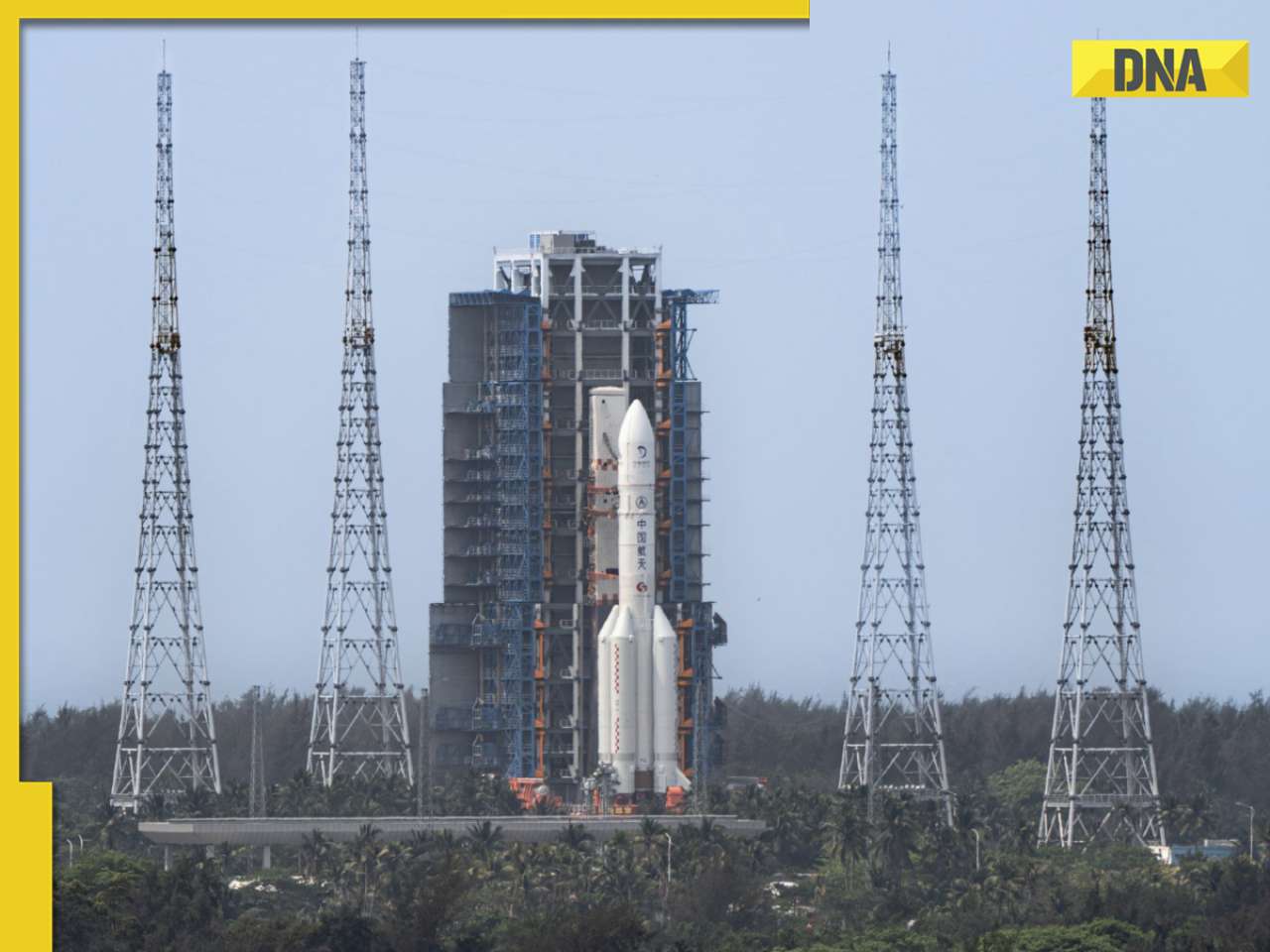Mobile data plans in India are among the cheapest in the world and the average retail price of smartphones are steadily declining, yet the Internet is out of the reach of nearly 950 million Indians, according to Assocham-Deloitte joint study.
Mobile data plans in India are among the cheapest in the world and the average retail price of smartphones are steadily declining, yet the Internet is out of the reach of nearly 950 million Indians, according to Assocham-Deloitte joint study.
Internet penetration is increasing in India, the access to affordable broadband, smart devices and monthly data packages is required to spread digital literacy to make their ends meet, noted the study titled 'Strategic national measures to combat cyber crime,' jointly conducted by Assocham and research firm Deloitte.
Existing government infrastructure assets should be further leveraged for provision of digital services at remote locations. Digital literacy needs to be increased by providing institutional training in schools, colleges and universities; accelerating partnerships with global technology leaders and using the workforce trained under Skill India to impart training. An integrated approach between Digital India and Skill India needs to be constructed to design programmes and impart training.
The government should increase awareness regarding the value add of technology to increase technology adoption. The benefits of technology such as increase in the standard of living of the weaker sections of society and enhancing financial inclusion should be communicated to citizens.
Private sector players should be incentivised to develop infrastructure, provide services and promote digital literacy as part of the Digital India program. Start-ups should be involved to create and customise apps to local needs to increase adoption of digital technology, adds the joint study.
India has over 1,600 languages and various dialects. This diversity has resulted in strong language barriers. In areas where people only use local languages, integration of local language and technology is required to drive digital literacy.
Fear of cyber crime and breach of privacy has been a deterrent in adoption of digital technologies in India. In order to encourage people to switch to digital means, it is important to provide awareness and education on cyber security, risks and safeguarding of information on the internet.
Mobile platforms and internet enabled programs should be used to improve the accessibility of training programmes. Credibility and recognition of certifications provided by various initiatives is the key to successful development of digital literacy. Sector Skills Councils (SSCs) associated with sub-sectors should get industry inputs on curriculum, training and services. Further, industry players should be compelled to recognize the credibility of certificates issued, noted the study.
The various stakeholders (different government programs, ministries, institutions, industries etc.) involved in imparting digital literacy need to work in coordination to obtain the most effective implementation. This will require transparency of information, workflow management and timely updates on the progress of various factions.
A framework needs to be defined for participation of the private sector in skill development programs, which defines the role of the private sector, expectations in terms of investments, content and job guarantees.
Skill training and digital literacy should be introduced as part of institutional training in schools, colleges and universities across India.
Curriculum and interactive programmes should be mandated to ensure adequate digital skills of all graduates. Skill building for Digital India Building skills required to achieve the Digital India vision.
India faces a severe shortage of well trained and skilled workers. It is estimated that only 2.3 percent of the workforce in India has undergone formal skill training versus over 50 percent in the developed countries. This shortage is accentuated in the electronic and digital sectors.
However, to achieve inclusive growth, skilled and well-trained manpower is critical.
Several strides have been made towards developing the right skills required to support Digital India and e-governance initiatives.
The top barriers to adoption of technologies in the economically weaker sections of society as well as in MSMEs include cost and affordability.
Most telecom operators so far have not invested significantly in development of high speed access networks in rural areas. Similarly, MSMEs also have low awareness of government and stakeholder schemes that could lead to numerous benefits.
A key hindrance to adoption of technology is the low rate of digital literacy in India. Several initiatives undertaken by the government and other organisations are expected to improve the digital literacy rate in the coming years which will in turn result in an increase in adoption of technology and digital services.
While there has been an increase in localised content and applications, content still remains limited in several local and regional languages.
Most applications that exist have been driven by the government. Private sector involvement remains limited to proof of concepts (PoCs) in limited test environments.
The speed at which digital infrastructure (especially fiber networks) is being developed needs to be increased. Existing government infrastructure assets (e.g., post offices, government buildings, CSCs) should be further leveraged for provision of digital services at remote locations.
Digital literacy needs to be increased by providing institutional training in schools, colleges and universities; accelerating partnerships with global technology leaders and using the workforce trained under Skill India to impart training. An integrated approach between Digital India and
Skill India needs to be constructed to design programmes and impart training.
The government should increase awareness regarding the value add of technology to increase technology adoption. The benefits of technology such as increase in the standard of living of the weaker sections of society and enhancing financial inclusion should be communicated to citizens.
Private sector players should be incentivised to develop infrastructure, provide services and promote digital literacy as part of the Digital India program. Start-ups should be involved to create and customise apps to local needs to increase adoption of digital technology.
![submenu-img]() Big update on Pakistan's first-ever Moon mission and it has this China connection...
Big update on Pakistan's first-ever Moon mission and it has this China connection...![submenu-img]() 2024 Maruti Suzuki Swift officially teased ahead of launch, bookings open at price of Rs…
2024 Maruti Suzuki Swift officially teased ahead of launch, bookings open at price of Rs…![submenu-img]() 'Kyun bhai kyun?': Sheezan Khan slams actors in Sanjay Leela Bhansali's Heeramandi, says 'nobody could...'
'Kyun bhai kyun?': Sheezan Khan slams actors in Sanjay Leela Bhansali's Heeramandi, says 'nobody could...'![submenu-img]() Meet Jai Anmol, his father had net worth of over Rs 183000 crore, he is Mukesh Ambani’s…
Meet Jai Anmol, his father had net worth of over Rs 183000 crore, he is Mukesh Ambani’s…![submenu-img]() Shooting victim in California not gangster Goldy Brar, accused of Sidhu Moosewala’s murder, confirm US police
Shooting victim in California not gangster Goldy Brar, accused of Sidhu Moosewala’s murder, confirm US police![submenu-img]() DNA Verified: Is CAA an anti-Muslim law? Centre terms news report as 'misleading'
DNA Verified: Is CAA an anti-Muslim law? Centre terms news report as 'misleading'![submenu-img]() DNA Verified: Lok Sabha Elections 2024 to be held on April 19? Know truth behind viral message
DNA Verified: Lok Sabha Elections 2024 to be held on April 19? Know truth behind viral message![submenu-img]() DNA Verified: Modi govt giving students free laptops under 'One Student One Laptop' scheme? Know truth here
DNA Verified: Modi govt giving students free laptops under 'One Student One Laptop' scheme? Know truth here![submenu-img]() DNA Verified: Shah Rukh Khan denies reports of his role in release of India's naval officers from Qatar
DNA Verified: Shah Rukh Khan denies reports of his role in release of India's naval officers from Qatar![submenu-img]() DNA Verified: Is govt providing Rs 1.6 lakh benefit to girls under PM Ladli Laxmi Yojana? Know truth
DNA Verified: Is govt providing Rs 1.6 lakh benefit to girls under PM Ladli Laxmi Yojana? Know truth![submenu-img]() Remember Heyy Babyy's cute 'Angel' Juanna Sanghvi? 20 year-old looks unrecognisable now, fans say 'her comeback will...'
Remember Heyy Babyy's cute 'Angel' Juanna Sanghvi? 20 year-old looks unrecognisable now, fans say 'her comeback will...'![submenu-img]() In pics: Arti Singh stuns in red lehenga as she ties the knot with beau Dipak Chauhan in dreamy wedding
In pics: Arti Singh stuns in red lehenga as she ties the knot with beau Dipak Chauhan in dreamy wedding![submenu-img]() Actors who died due to cosmetic surgeries
Actors who died due to cosmetic surgeries![submenu-img]() See inside pics: Malayalam star Aparna Das' dreamy wedding with Manjummel Boys actor Deepak Parambol
See inside pics: Malayalam star Aparna Das' dreamy wedding with Manjummel Boys actor Deepak Parambol ![submenu-img]() In pics: Salman Khan, Alia Bhatt, Rekha, Neetu Kapoor attend grand premiere of Sanjay Leela Bhansali's Heeramandi
In pics: Salman Khan, Alia Bhatt, Rekha, Neetu Kapoor attend grand premiere of Sanjay Leela Bhansali's Heeramandi![submenu-img]() DNA Explainer: Why Harvey Weinstein's rape conviction was overturned, will beleaguered Hollywood mogul get out of jail?
DNA Explainer: Why Harvey Weinstein's rape conviction was overturned, will beleaguered Hollywood mogul get out of jail?![submenu-img]() What is inheritance tax?
What is inheritance tax?![submenu-img]() DNA Explainer: What is cloud seeding which is blamed for wreaking havoc in Dubai?
DNA Explainer: What is cloud seeding which is blamed for wreaking havoc in Dubai?![submenu-img]() DNA Explainer: What is Israel's Arrow-3 defence system used to intercept Iran's missile attack?
DNA Explainer: What is Israel's Arrow-3 defence system used to intercept Iran's missile attack?![submenu-img]() DNA Explainer: How Iranian projectiles failed to breach iron-clad Israeli air defence
DNA Explainer: How Iranian projectiles failed to breach iron-clad Israeli air defence![submenu-img]() 'Kyun bhai kyun?': Sheezan Khan slams actors in Sanjay Leela Bhansali's Heeramandi, says 'nobody could...'
'Kyun bhai kyun?': Sheezan Khan slams actors in Sanjay Leela Bhansali's Heeramandi, says 'nobody could...'![submenu-img]() Meet actress who once competed with Aishwarya Rai on her mother's insistence, became single mother at 24, she is now..
Meet actress who once competed with Aishwarya Rai on her mother's insistence, became single mother at 24, she is now..![submenu-img]() Makarand Deshpande says his scenes were cut in SS Rajamouli’s RRR: ‘It became difficult for…’
Makarand Deshpande says his scenes were cut in SS Rajamouli’s RRR: ‘It became difficult for…’![submenu-img]() Meet 70s' most daring actress, who created controversy with nude scenes, was rumoured to be dating Ratan Tata, is now...
Meet 70s' most daring actress, who created controversy with nude scenes, was rumoured to be dating Ratan Tata, is now...![submenu-img]() Meet superstar’s sister, who debuted at 57, worked with SRK, Akshay, Ajay Devgn; her films earned over Rs 1600 crore
Meet superstar’s sister, who debuted at 57, worked with SRK, Akshay, Ajay Devgn; her films earned over Rs 1600 crore![submenu-img]() IPL 2024: Spinners dominate as Punjab Kings beat Chennai Super Kings by 7 wickets
IPL 2024: Spinners dominate as Punjab Kings beat Chennai Super Kings by 7 wickets![submenu-img]() Australia T20 World Cup 2024 squad: Mitchell Marsh named captain, Steve Smith misses out, check full list here
Australia T20 World Cup 2024 squad: Mitchell Marsh named captain, Steve Smith misses out, check full list here![submenu-img]() SRH vs RR, IPL 2024: Predicted playing XI, live streaming details, weather and pitch report
SRH vs RR, IPL 2024: Predicted playing XI, live streaming details, weather and pitch report![submenu-img]() SRH vs RR IPL 2024 Dream11 prediction: Fantasy cricket tips for Sunrisers Hyderabad vs Rajasthan Royals
SRH vs RR IPL 2024 Dream11 prediction: Fantasy cricket tips for Sunrisers Hyderabad vs Rajasthan Royals ![submenu-img]() IPL 2024: Marcus Stoinis, Mohsin Khan power Lucknow Super Giants to 4-wicket win over Mumbai Indians
IPL 2024: Marcus Stoinis, Mohsin Khan power Lucknow Super Giants to 4-wicket win over Mumbai Indians![submenu-img]() Viral video: Man's 'peek-a-boo' moment with tiger sends shockwaves online, watch
Viral video: Man's 'peek-a-boo' moment with tiger sends shockwaves online, watch![submenu-img]() Viral video: Desi woman's sizzling dance to Jacqueline Fernandez’s ‘Yimmy Yimmy’ burns internet, watch
Viral video: Desi woman's sizzling dance to Jacqueline Fernandez’s ‘Yimmy Yimmy’ burns internet, watch![submenu-img]() Viral video: Men turn car into mobile swimming pool, internet reacts
Viral video: Men turn car into mobile swimming pool, internet reacts![submenu-img]() Meet Youtuber Dhruv Rathee's wife Julie, know viral claims about her and how did the two meet
Meet Youtuber Dhruv Rathee's wife Julie, know viral claims about her and how did the two meet![submenu-img]() Viral video of baby gorilla throwing tantrum in front of mother will cure your midweek blues, watch
Viral video of baby gorilla throwing tantrum in front of mother will cure your midweek blues, watch








































)









)
)
)
)
)
)